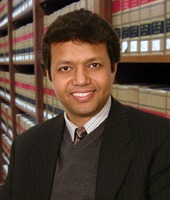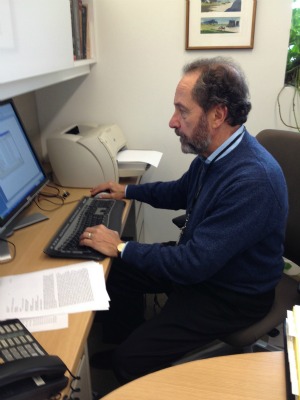Interested Parties

Dr. Habib Ahsan
Bangladesh-born Dr. Habibul Ahsan was a young assistant professor of epidemiology at Mailman; he focused on environmental and genome factors in cancer and other diseases. Since childhood, Ahsan had been friends with Faruque Parvez, a pharmacist who worked for a US health maintenance organization and had a background in public health. Parvez knew how to design surveys, procure drugs, and improvise under challenging logistical and political conditions. He also had extensive experience conducting fieldwork in rural areas of Bangladesh. The two had often discussed the possibility of returning to their home country to conduct public health research.

Faruque Parvez
In summer 1998, Parvez visited an uncle, a physician who ran a hospital in the Bangladeshi capital, Dhaka. During the visit, he learned about Bangladeshs arsenic problem, and that fall accompanied his relative on a tour of US East Coast public health institutions to discuss arsenic studies and potential mitigation programs. Parvez contacted Ahsan, and the two agreed to visit Bangladesh that winter to collaborate with the uncle on the arsenic problem.
Meanwhile, geochemist Alexander van Geen had learned about the Bangladesh arsenic problem from a visiting geologist from Calcutta. Van Geen was a research professor at Columbias Lamont-Doherty Earth Observatory. The geologist didnt have any scientific papers, recalls van Geen. He had some pamphlets essentially written by NGOs and the like, saying that this was a serious issue. [7] Van Geens specialty was the geochemical cycling of trace elements in natural and perturbed environments, such as mine tailings, coastal sediment, estuaries, and groundwater, as well as the reconstruction of past climate change in near-shore environments. He had pursued several interdisciplinary projects, teaming with health and social scientists to tackle complex environmental problems.

Alexander van Geen
Finally, Dr. Joseph Graziano was a pharmacologist and environmental health specialist at the Mailman School. He studied genetic diseases of hemoglobin, such as sickle-cell anemia. In earlier years, he had been part of a team that discovered a drug to treat lead poisoning in children. His lifes proudest work to date had been a 15-year project in the former Yugoslavia that studied the effects of environmental lead exposure. His Columbia lab specialized in analyzing metal in biological samples.
Superfund grant . Shortly after the New York Times article appeared, three earth scientists approached Graziano about working together on a project to study the naturally occurring arsenica phenomenon they found puzzling. [8] We dont feel we would be credible without a public health partner, they told him. A week later Ahsan, who had recently joined the faculty, also approached Graziano. He said, Im a cancer epidemiologist. Im a Bangladeshi-American. Its my country, and I want to work on it, but I dont have a lab. I know your lab can make measurements of arsenic in biological samples remembers Graziano.

Dr. Joseph Graziano
Graziano had recently headed the review of grant applications at the National Institute for Environmental Health Sciences (NIEHS)a branch of the National Institutes of Health (NIH)under its Superfund program to clean up hazardous waste sites. He wondered whether, because arsenic also occurred in groundwater in the US, the NIEHS might consider funding a multidisciplinary arsenic study based in Bangladesh. [9] We could actually do something, he told his visitors. The earth scientists got totally lit up by the fact that we could help people. [10]
Dr. Joseph Graziano describes the most exciting part of the proposal.
The group formed a team. The deadline for the next round of Superfund grants was May 1999a ridiculously short time to assemble a standard scientific grant application. But the team decided to go for it. We basically dropped everything. Five weeks later, we got on a plane and went to Bangladesh, says Graziano.
[7] Bowen telephone interview with Alexander van Geen on March 7, 2012. All further quotes from van Geen, unless otherwise attributed, are from this interview.
[8] The three were Martin Stute and James Simpson, geologists from Columbias Lamont-Doherty Earth Observatory, and Yan Yheng, a geochemist from Queens College.
[9] In the US, Western states had the largest concentration of water sources exceeding the EPA standard of 10 parts per billion (ppb). Groundwater in parts of the Midwest, Mid-Atlantic and New England also had arsenic levels higher than the EPA standard. For more information, see: http://water.epa.gov/lawsregs/rulesregs/sdwa/arsenic/Basic-Information.cfm
[10] Authors' interview with Dr. Joseph Graziano on January 19, 2012, in New York City. All further quotes from Graziano, unless otherwise attributed, are from this interview.